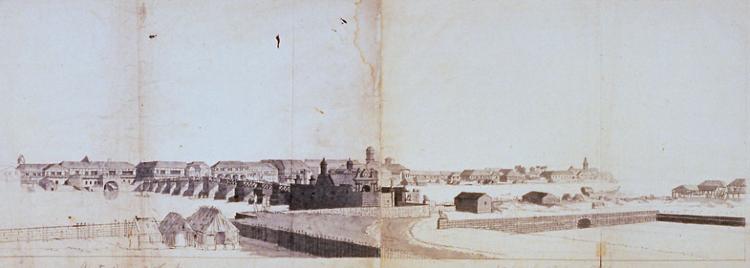A "well ordered" city
emerges
|
Manila forms part of a process of urban development that also takes in the
whole of Spanish America and conforms to a single model of
city.
Maynila, under the rule of Soliman, a Moslem and ally of the
royal families of Sulu and Brunei, controlled trading activities between the
Chinese and Malayans and the inhabitants of the interior. On 24 June 1571
Miguel López de Legazpi, hispanicizing his former name, founds the city of
Manila on the left bank of the Pasig River on the edge of the bay, establishes a
municipal Council and declares it the capital of the new territories
under the Spanish Crown. The birth of Manila is accompanied by new
activities that give rise to the appearance of urban life, hitherto
unknown in the Philippines. Manila, like many others in Spanish America, is a
port city, and will play a vital role as the point of exchange for
merchandise traded between the Western world and the Orient. The fortress of
Nuestra Señora de Guía stood guard over the city. By the end of the 16th
century the city was surrounded by a first walled defence which backed onto the
river and the edge of the bay, with the Santiago Fort at its top end.
Chinese trading merchants and craftsmen, known as sangleyes settle
in Manila on the other side of the river and are the protagonists par excellence
of life in the new city; a bridge connects them with the walled city.
The city of Manila. Oil painting on the inside of a wooden chest,
circa 1640-50. Museo de Arte Jose Luis Bello, Puebla. Mexico. After the 1645
earthquake Manila was reconstructed. By the end of the 17th century, Intramuros
had some six hundred houses that were protected by its stone walls.

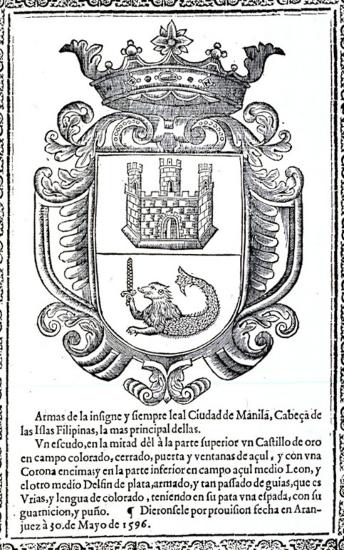 |
Coat of arms of the city of Manila, capital of the
Philippines, adopted on 30th may 1596. BN
|
| The city of Manila. AGI Manila was undoubtedly
the centre of the port life of the Philippines, and shared this task with
the naval arsenal of Cavite; they were, in a sense, complementary cities.
|
 |
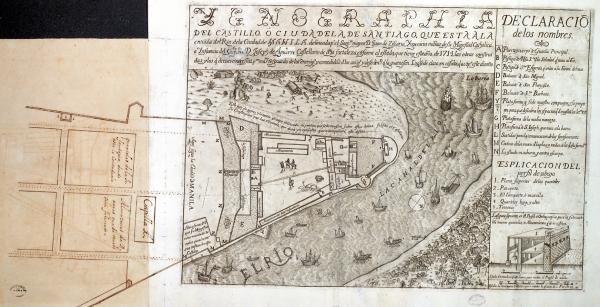 |
The Castle of Santiago in the city of Manila. Juan de
Ciscara. 1714. AGI The Santiago fortress was built between 1596 and
1602 on the land promontory between the sea and the Pasig River, and was
the most important fortification built in Manila. The walls encircling the
city started at this point. |
| Ceremonies and traditional dance dress of the country
in 1776. AGI |
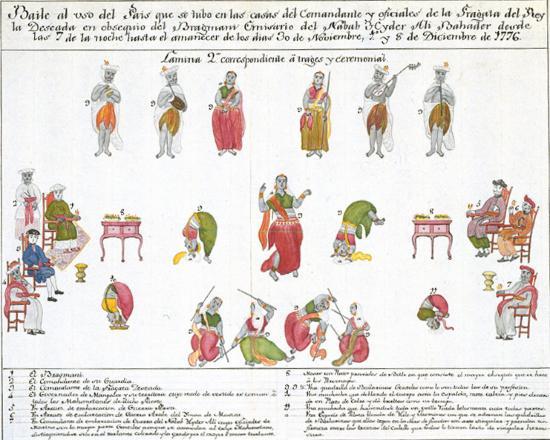 |
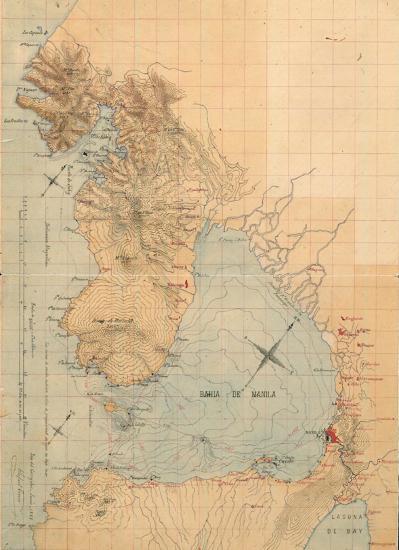 |
Manila Bay. Rafael Cerero. 1888. SGE Corregidor
Island divides the entrance to the bay into two channels: one is the "Boca
Chica", which separates the island from Punta Lasirí, and the other is
"Boca Grande", which separates Pulo Caballo and Punta Restringa.
Twenty-five miles ahead of them is the city of Manila.
|
| Ground plan of a fortress in Manila. AGI Luzon
was the best defended island. From its beginnings, Manila attempted to
fortify itself as it was a strategically important point on the route
linking China with Cádiz. |
 |
View of the bay and the
city of Manila. Engraving made by Francisco Javier de Herrera. 1818. SHM The
beautiful bay of Manila with its limpid waters was admired by all travellers and
seamen putting into port on the coasts of the island of Luzon. It was used as an
anchorage by the ships arriving from the principal trading centres of Asia and
America.

View of the city of Manila from Bagumbayan. Engraving made by
Esteve. 1818. SHM In 1581, ten years after its founding, Manila received the
title of "Insigne" (noble) and "Leal" (loyal), and became an episcopal seat
under the control of Mexico after the proclamation of a papal bull.

The Pasig River in the city of Manila. Fernando Brambila.
Collection of drawings and engravings made on the Malaspina Expedition.
1789-1794. MN The city of Manila was founded near to the mouth of the great
Pasig River, which was navigable as far as its source at the Laguna de Bay. Up
until the 19th century, only one stone-built bridge connected the fortified
precinct with the districts on the opposite bank.
